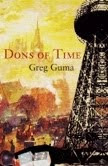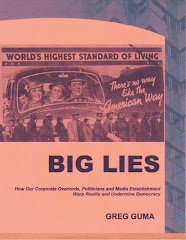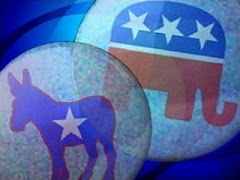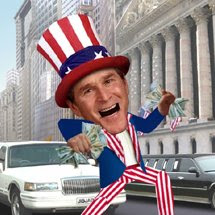Each year, as fireworks celebrate the Declaration of Independence and people discuss how the United States began, the spotlight normally turns to “revolutionary” leaders and the “armed struggle” waged more than two centuries ago. But as usual, the real story is a bit different. The movement toward independence in the “new world” actually began a decade before the “shot heard round the world” and involved thousands of people. By the time things turned violent, substitute governments and firm alliances were operating in nine colonies.
Early colonial campaigns weren’t mere passive pleading. They were demands, backed by nonviolent actions that forced Britain to change its laws. Through economic boycott and the development of new government structures, John Dickinson wrote in 1767, colonists could pressure parliament by “withholding from Britain all the advantages they get from us.” One pamphlet circulating at the time urged colonists to “bid defiance to tyranny by exposing its impotence.”
Many colonists were already following this advice, refusing to comply with the new Stamp Act, a direct tax on all sorts of licenses, publications and legal papers, by resisting use of the stamps. According to Britain, the duty would be used to finance British troops “protecting” colonists from Indian “hostility” and French expansionism. Resistance began even before the Act was official. This grassroots movement, which essentially nullified the law, involved a massive refusal to import British goods and the beginning of economic self-sufficiency in North America.
The forms of political defiance and direct action included civil disobedience and, in some cases, threats aimed at stamp distributors. No one was killed, but the threats and scattered attacked on property were effective deterrents. By November all the stamp distributors resigned, while ports and newspapers remained open despite the absence of stamps. Debts to British merchants were left unpaid. The Rhode Island Assembly resolved that only colonists could tax colonists. In order to avoid mass prosecution of resisters, however, George Washington advised that colonial courts be closed.
Despite the absence of violence, the threat to British rule was obvious. Power was swiftly being diffused through many substitute governments. Town meetings took to passing laws that were more widely obeyed than British regulations. By early 1768 more than four million pounds was owed to Britain’s merchants, who pressured the King and parliament for action. The Stamp Act was repealed, but Britain simultaneously proclaimed that the right to tax the colonies still and would always exist. What couldn’t be defended on the ground was brandished on paper.
The Townshend Acts, a 1768 attempt by new British Prime Minister Charles Townshend to impose an external levy, met just as much resistance. The new Acts placed a tax on imported goods such as lead, paint, paper, glass, and tea. This time it wasn’t merchants who initiated the campaign but mechanics, artisans and workers. The main method was non-consumption, along with development of economic alternatives along self-sufficient lines. When goods weren’t bought and those on household shelves weren’t used, merchants were forced not to import the boycotted items. Within a year the Massachusetts legislature denounced the law, calling for united action, and Virginia voted for strict non-importation, notifying other colonies of its decision.
Non-importation put a squeeze on British merchants until the Acts died in 1770. But this time Britain was a bit more clever: All taxes - except the duty on tea – were repealed. Falling short of total victory the colonists became divided about the success of their campaign. In the confusion resistance disintegrated as Britain doggedly held onto its right to tax.
Despite the setback colonial fervor persisted in other resistance efforts. The Committees of Correspondence, established years earlier as underground governments, maintained a network for expressions of solidarity, protests, mutual aid, and new ideas. In 1773, Britain provided the catalyst to test these emerging organs of popular power.
The East India Company, an early international monopoly, was in financial trouble. To help the influential business, Britain’s parliament passed an Act controlling prices in order to give East India a colonial monopoly. The law manipulated the market so that even smuggled tea was more expensive. The Boston Tea Party was an early response; Bostonians in Indian garb dumped 342 chests of tea overboard. Britain responded by closing the Port of Boston and increasing repression.
The colonies mobilized, helped by their previous experiences with united action and Paul Revere’s rides to “give you all the news.” Many communities – New York, Philadelphia, Charlestown, Wilmington and Baltimore among them – pledged moral and economic support. Money, rice and sheep flooded into Massachusetts as Britain tried to undermine self-government.
Defying Britain, a Massachusetts Town Meeting resolved to cut off imports and exports, and called again for economic boycott. Revere rode to New York and Philadelphia with news of the Suffolk Resolves, soon adopted by the Continental Congress. All coercive laws were unconstitutional, the Congress had ruled, and are not to be obeyed. People were urged to form their own governments and deny taxes to the so-called “legal” governments in their regions.
Although the Resolves raised the possibility of war, the thrust remained nonviolent – boycott, tax resistance, non-importation (sometimes including slaves), and development of substitute local governments. The Continental Association, formed at the end of 1774, incorporated these approaches and added legal enforcement of “non-intercourse” along the lines used earlier in Virginia.
As this brief review suggests, the movement for US independence emerged from the grassroots, from people in neighborhoods and communities, colonists who made personal commitments and participated in hunger strikes, non-consumption and other heroic acts of resistance. It was an enormous and sustained struggle, one of many nonviolent campaigns that have profoundly influenced world history, although “official” accounts rarely give them recognition.
Civil resistance – also known as “nonviolent action” or “people power” – has proven effective, though not always successful on its own, in many colonial rebellions, struggles for labor, civil and women’s rights, campaigns to resist genocide and dictatorship, and other battles for independence and freedom. Indian nationalists used it in their struggle against British domination, various European countries used it to resist Nazi occupation, dissidents in Communist-ruled countries used it to increase freedom – and ultimately end dictatorships in Poland, Czechoslovakia, East Germany, Estonia, Latvia, and Lithuania. "Arab Spring" uprisings in the Mid-East and North Africa used the same tactics.
These movements weren’t passive or submissive, and most of the people involved weren’t pacifists, saints or natural leaders. They were ordinary people in extraordinary situations, using diverse methods – from protests and vigils to the creation of parallel or “de facto” governments – to challenge and ultimately overturn illegitimate authority. In the American colonies two centuries ago, people were well on their way to winning the War of Independence before the shooting even started. There are clearly lessons here for the domestic and global struggles we face today.
Happy Independence Day!
To learn more about recent nonviolent struggles and the potential of civil resistance, consult the work of Gene Sharp, founder of the Albert Einstein Institution, author of Waging Nonviolent Struggle and other books.
Subscribe to:
Post Comments (Atom)































1 comment:
This story of nonviolent struggle in the American colonies is told at length in the book "Resistance, Politics, and the Struggle for American Independence." http://tinyurl.com/6kzdq7
Post a Comment